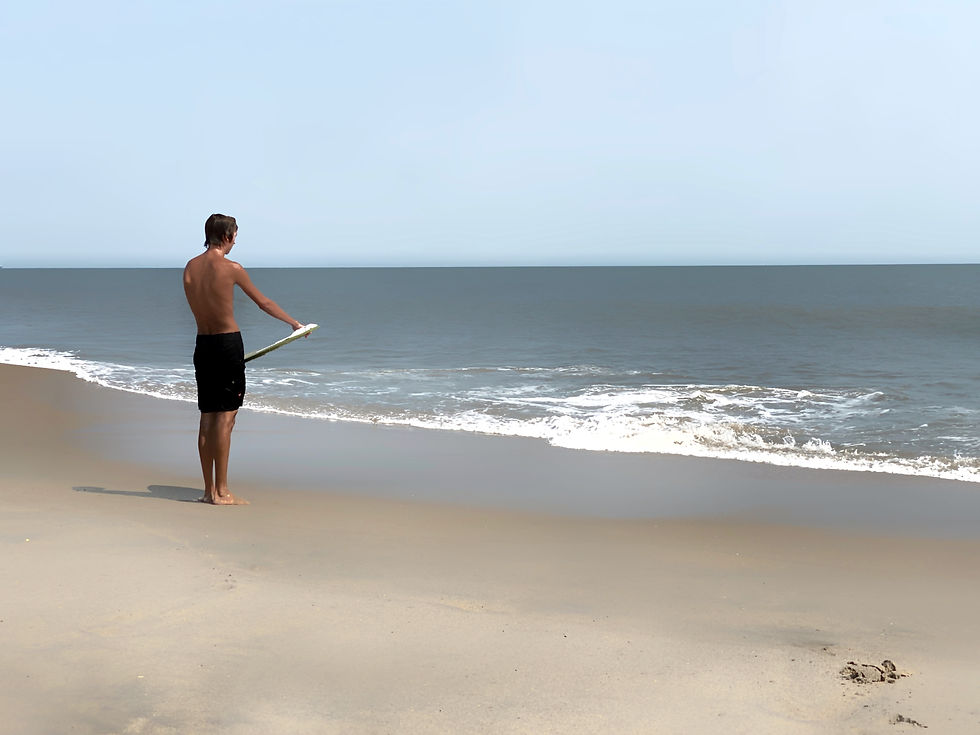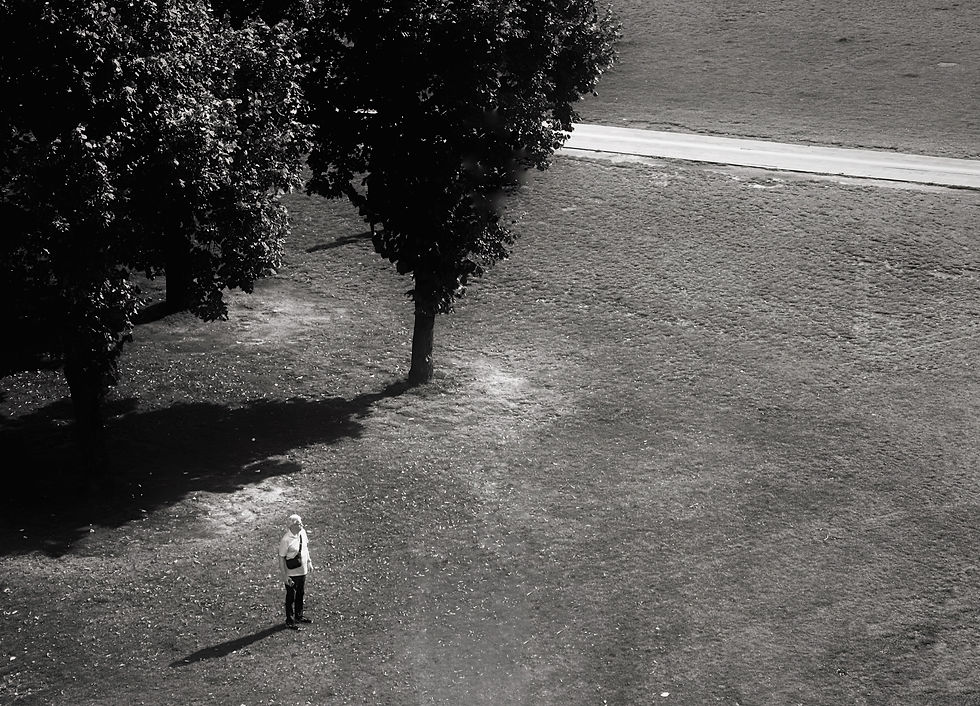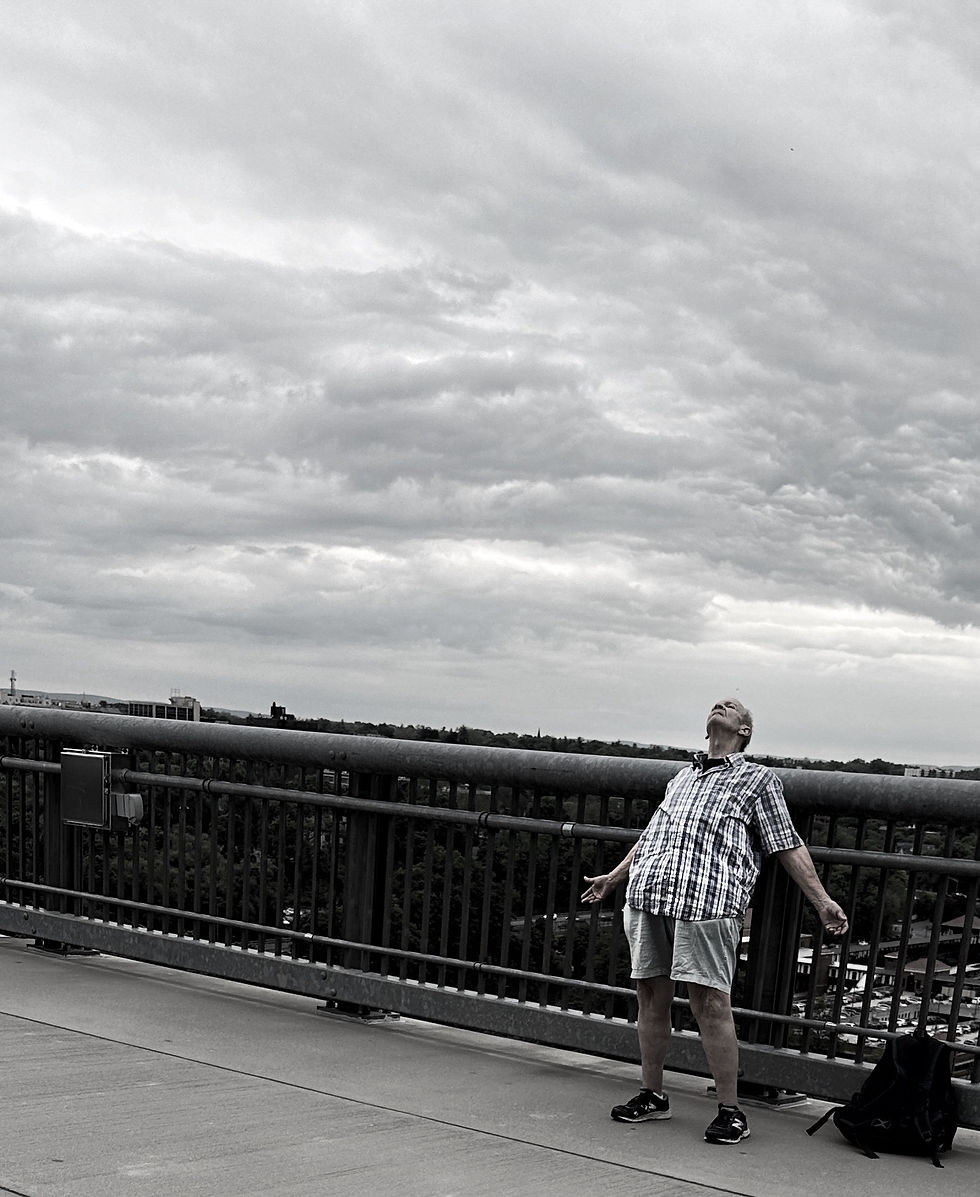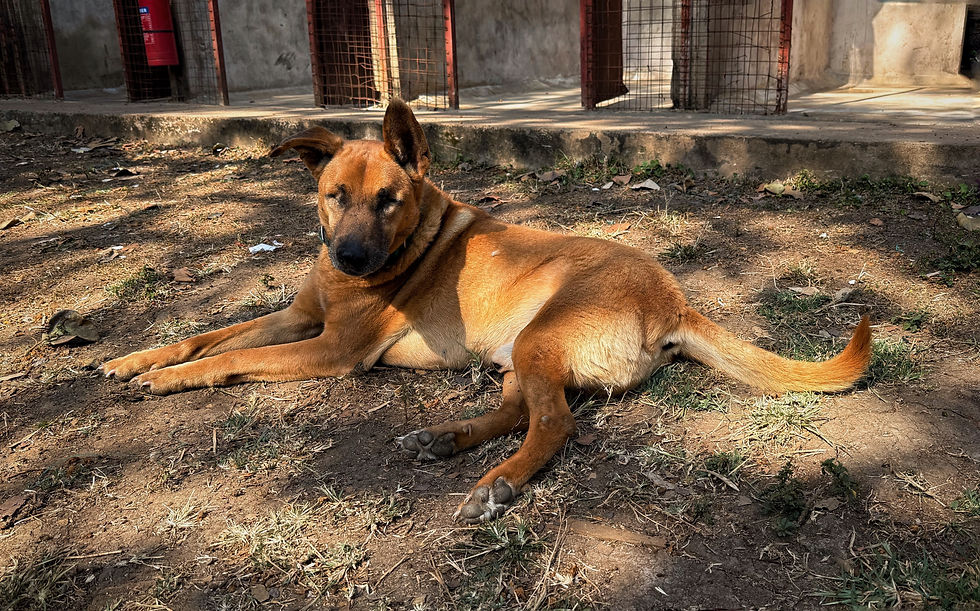The Power of Negative Space in Street Photography
- Arnold Plotnick

- Oct 24
- 3 min read
Because Empty Space Isn't Really Empty
A few months ago, I watched a scene in the Netflix medical drama “Critical”, where a surgeon remarked that “the best surgeons know when not to operate.” That line stuck with me. Not because I’ve faced that exact dilemma as a veterinary surgeon, but because it reminded me of something I’ve learned in street photography: the best street photographers know what not to include in the frame.
Negative space is the quiet, uncluttered areas in a photograph, the parts that don’t beg for attention. The classic example is the lone tree in the middle of an open field. The tree is the subject, and the empty sky and the grass around it comprise the negative space. The street photographer’s version might be a single figure on a sidewalk walking past an enormous blank wall. The sky doesn’t compete with the tree, and the wall doesn’t compete with the walker. Instead, the negative space directs your eye straight to the subject and allows it to stand out, imparting emotional weight to the scene.
Street photographers often train themselves to react fast, to thrive on chaos, to cram life into every inch of the frame. But not every image needs that kind of density. Street photography is also about restraint, overcoming the impulse to fill every corner of the frame.
Of course, negative space is more than just a compositional trick. In the strongest images, the emptiness itself becomes a subject. During a tea ceremony in Tokyo, I was introduced to the Japanese concept of ma. The word doesn’t translate neatly. Ma refers to the meaningful spaces between things, like the thoughtful pauses between words in a conversation, or the silence between musical notes in a concert. What appears like absence is actually presence, a purposeful emptiness that allows meaning to emerge. That idea captures perfectly what negative space brings to photography.
Negative space cuts through all that visual clutter, making you actually stop and look.
I saw this in one of my own photos: a woman taking a cigarette break, tucked inside a small nook of a massive building. In a city that never shuts up, the scene was unusually quiet. No clutter at all. I framed her low in the shot, intentionally letting the dark wall dominate the frame.

The dark wall, with its uniform color and texture, became a giant canvas, conveying solitude and emptiness. It turned the silence itself into a subject.
In another image, two construction workers appear tiny against the towering façade of a skyscraper, similar to the woman in the previous photo.

In both images, the figures are dwarfed by their surroundings, but the mood here is different. The presence of two people shifts the story away from loneliness and toward scale. Here, the negative space emphasizes proportion and power rather than solitude.
In a third photo, we have a surfer on a beach, gazing at the ocean. He occupies a mere sliver of the frame, while the surrounding sea, sand, and sky take up nearly everything. This time, the negative space doesn’t feel oppressive. Unlike the vertical weight of the buildings in the previous photos, the horizontal expanse conveys calmness, freedom and anticipation.

Three photographs, three uses of the same principle, three completely different emotions: solitude, scale, and serenity. That’s the beauty and power of negative space.
Negative space in street photography isn’t just about leaving parts of the frame blank. It’s about restraint. Just as the best surgeons know when not to cut, the best photographers know what not to include. Absence can be as powerful as presence, and what isn’t in the photo may be what makes the photograph unforgettable.
Here are a few more examples of negative space from my personal files.











Comments